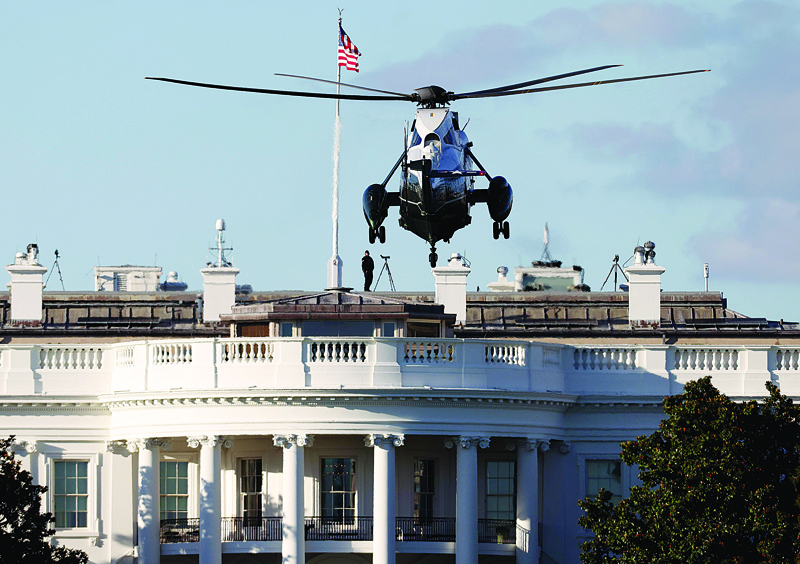
WASHINGTON: Offices are crowded, visitors are constant, and the boss doesn't like people wearing masks: welcome to the White House where President Donald Trump has tested positive for the coronavirus. The revelation during the early hours of Friday that Trump and his wife Melania were both positive sent staff into a frantic cycle of contact tracing and emergency testing. It's not an easy job.
Crowds and travel
Avoid large groups, stay masked and socially distanced? Not for this president. Trump has been holding growing numbers of reelection rallies with thousands of people pressed tight and in most cases not covering their faces. The last one was in Minnesota on Wednesday, where he was accompanied by close aide Hope Hicks, who was revealed on Thursday to have tested positive.
Another planned for Florida on Friday has been cancelled. Trump had been due to fly for a rally in Wisconsin, a state where infections are rising, on Saturday. Next week it was to have been a long-distance swing through the west, including Arizona. Many of these events are outside, but last week Trump met indoors with hundreds of supporters in Florida and Georgia. He also hosted a large gathering in the White House Rose Garden last Saturday to announce Amy Coney Barrett as his Supreme Court nominee. The White House said Friday that she has since tested negative.
Tight spaces
The White House is less a typical government office building than a stately home converted for government use, with warrens of small offices and corridors. Even the famed Oval Office gets quickly cramped, while for staff "office" often means little more than a desk crammed into an alcove. Powerful Trump son-in-law Jared Kushner, for example, works out of one of the smaller offices. But as he told Time magazine, it's got "good location"-right by the president's private dining room, a favorite hangout for Trump.
Nearly 400 people work in the White House, aside from the journalists, who work from an even more cramped press wing. And while journalists rigorously adhere to mask guidelines, few staff do. Trump has frequently mocked masks but says he is safe because of frequent testing. The White House uses the rapid Abbott test, which can give results within minutes, but screening protocols are not watertight.
For example, some journalists are tested systematically, while others who are not tested yet still come within a few feet of Trump when he takes questions out by his Marine One helicopter. Even Trump's testing schedule is unclear. In July his spokeswoman Kayleigh McEnany said he took a test "multiple times a day." Trump contradicted her saying "on average a test every two days, three days."
Planes, choppers, automobiles
If the White House is crowded, then try Air Force One, Marine One or the limousine known as "the Beast"-all modes of transport where guests are within an arm's length of the president. Hicks, 31, was with Trump when he flew to Cleveland on Tuesday for his first of three debates against Democratic challenger Joe Biden. She was with him again flying to Minnesota for the following day's rally, including the short but extra close-quarters leg on Marine One. The New York Times reported that Hicks began feeling ill on the plane ride back from Minnesota and self-quarantined while on Air Force One.
Matter of debate
Trump's controversial position on masks-which he has often downplayed or even mocked-could not have been more starkly on display than at Tuesday's debate against Biden. Trump's family and entourage, including the first lady, arrived masked at the Cleveland Clinic which was hosting the event but then took their masks off.
An attempt by a doctor to pass out masks was reportedly rejected by the Trump guests. And according to Chris Christie, the former New Jersey governor who helped Trump drill for the debate a few days earlier, "no one was wearing masks in the room when we were prepping." There were "about five or six people" in the debate prep room, Christie said.- AFP









